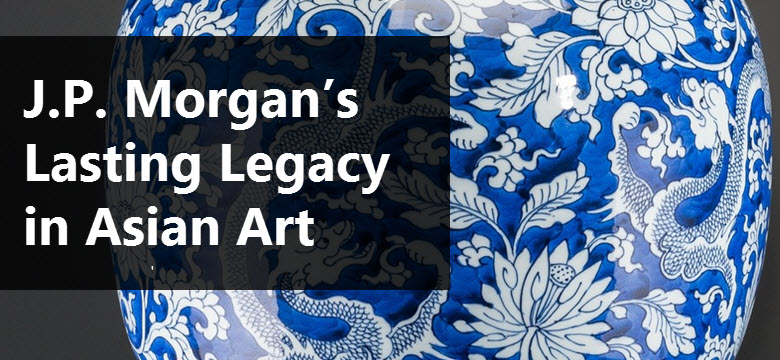
Described as a voracious collector, John Pierpoint (J.P.) Morgan spent the last decades of his life adding items to an already-impressive collection that included art, sculptures and significant pieces from around the world. The Morgan Library & Museum states that the man responsible for the creation of the Federal Reserve banking system spent the last two decades of his life collecting $60 million in art, about $900 million by today’s standards. At the time of his death, his net worth was estimated at “only” $80 million, prompting fellow industrialist and financier John D. Rockefeller to quip, “and to think, he wasn’t even a rich man.”
J.P. Morgan’s collection included thousands of pieces, Including bronzes, porcelains, watches, ivories and paintings to furniture, tapestries, armor and ancient Egyptian artifacts. However, he had a special interest in Chinese Porcelain. Morgan’s collection of Chinese porcelain has been described by the Metropolitan Museum of Art as the most comprehensive that is known to exist. Morgan was not a scholar of Asian art, but rather collected pieces in the same manner; he built his other massive collections by using a keen eye and his personal intuition. Factsanddetails.com noted that in 1925, a warlord offered to sell the American multi-millionaire the entire imperial collection of art for $20 million. Morgan turned him down.
One of the more unique pieces from Morgan’s collection is a monumental triple gourd vase that towers over most porcelain vases at nearly 41 inches tall. The two-piece construction vase features an upper baluster segment with floral and foliate motifs, a midsection with dragons, leaves, and blossoms and the lowest portion is decorated with chrysanthemums and dragons. The vase is estimated to sell for $30,000-50,000 during Heritage Auctions’ inaugural Asian Art Auction on April 2, 2017.

Rachel Cohen wrote about Morgan’s collecting activity in the Sept. 5, 2015 issue of Apollo, the London-based art magazine, saying that for the financier “collecting was a primary activity, like doing business, and, like business, collections could have different meanings in different contexts: they could be personal, romantic, dynastic, historical, geographic, patriotic, didactic, scholarly, even devout.” At the time of his death in 1913, his son, J.P. Morgan Jr., donated many of the items to the Metropolitan Museum of Art. J.P. Morgan Jr. was the first vice president of the museum in 1904 and eventually became president of the Met as well as a major force in its establishment.




Leave a Comment